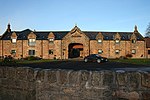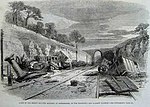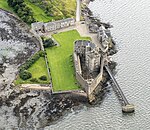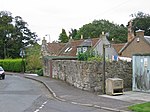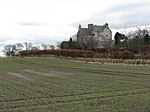Philpstoun railway station
Disused railway stations in West LothianFormer North British Railway stationsPages with no open date in Infobox stationRailway stations in Great Britain closed in 1951Railway stations in Great Britain opened in 1842 ... and 1 more
Use British English from October 2022
Philpstoun railway station was a railway station in the village of Philpstoun, to the east of Linlithgow in West Lothian, Scotland. It was located on the Edinburgh and Glasgow Railway.
Excerpt from the Wikipedia article Philpstoun railway station (License: CC BY-SA 3.0, Authors).Philpstoun railway station
Station Road,
Geographical coordinates (GPS) Address Nearby Places Show on map
Geographical coordinates (GPS)
| Latitude | Longitude |
|---|---|
| N 55.9773 ° | E -3.5161 ° |
Address
Station Road
Station Road
EH49 6RH
Scotland, United Kingdom
Open on Google Maps



